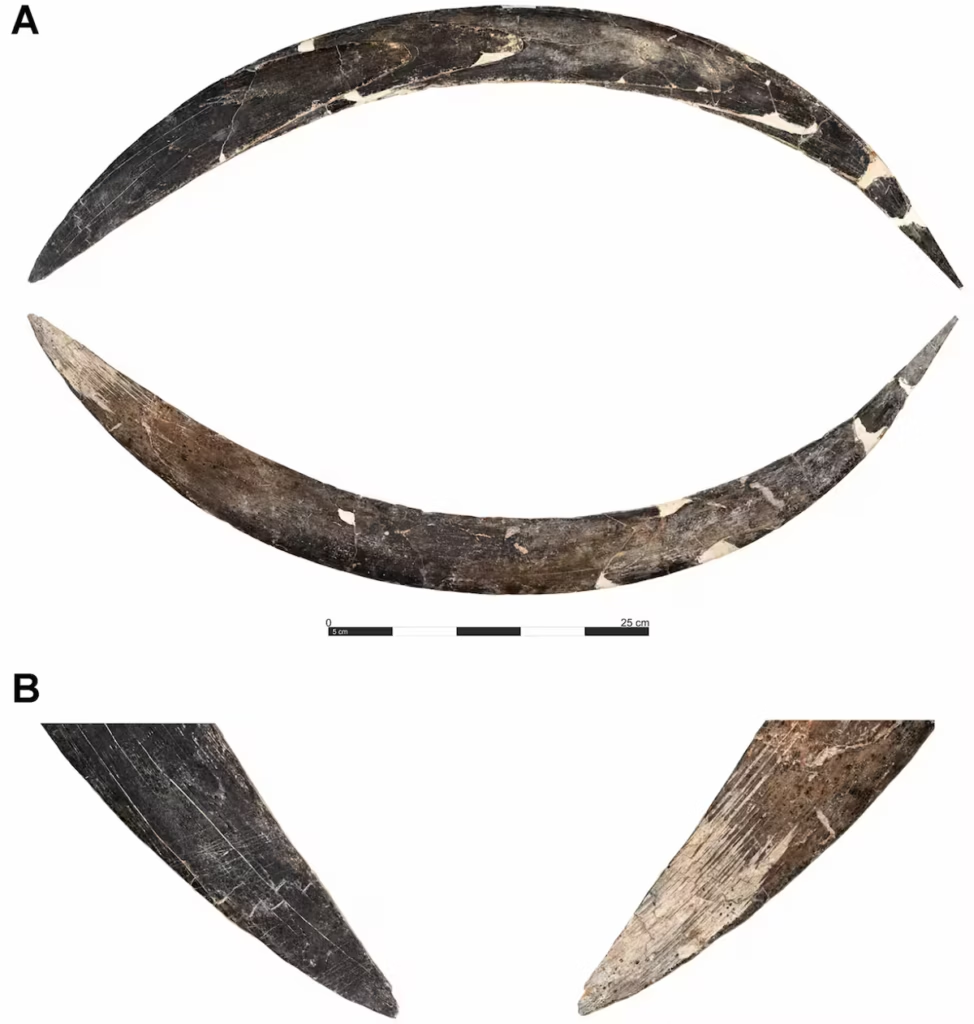Archaeologists have uncovered a 40,000-year-old hunting weapon carved from mammoth tusk in southern Poland’s Obłazowa Cave — a discovery that may represent one of Europe’s oldest known throwing tools. Far from being a simple implement, this artifact reshapes our understanding of early human ingenuity and culture.
Measuring 72 centimeters in length and crafted with remarkable precision, the tool offers rare insight into Upper Paleolithic technology and the cognitive abilities of early Homo sapiens who inhabited Central Europe during the Late Pleistocene.
Not Your Typical Boomerang
Although often labeled a “boomerang,” this artifact was never meant to return to the thrower. Instead, it was engineered for accuracy and power. Its aerodynamic design prioritizes trajectory stability over spin, making it an effective non-returning projectile. Wear-pattern analysis indicates it was used repeatedly by a right-handed individual, revealing much about daily hunting practices during the Paleolithic era.
Craftsmanship and Strategic Thinking
The choice of mammoth ivory as the raw material underscores a sophisticated understanding of resources. Not only is ivory dense and durable, but its presence in the cave—despite the lack of carving debris—suggests the tool was manufactured elsewhere and intentionally transported to the site. This implies advanced planning, mobility, and possibly symbolic significance.

During radiocarbon dating, contamination made it impossible to directly date the tool. However, researchers used Bayesian modeling on animal bones and human remains found in the same stratigraphic layer. The result places the artifact securely between 42,290 and 39,280 calibrated years before present.
Cultural Layers Beneath the Surface
The tool was discovered alongside ornaments such as shell necklaces, bone beads, and a Homo sapiens finger bone. These items point not only to functional craftsmanship but also to a symbolic culture capable of producing art and personal adornment—hallmarks of cognitive complexity.
The presence of such sophisticated tools next to human remains adds further weight to the theory that early modern humans had technological advantages over Neanderthals. This may have contributed to their successful expansion across Europe during the Upper Paleolithic.

Independent Innovation in Prehistoric Europe
For decades, boomerang-like throwing tools were considered exclusive to Aboriginal Australians or ancient Egyptian cultures. This discovery challenges that notion, offering evidence that early Europeans developed similar technologies independently—and much earlier than previously assumed.
Isotope analysis of animal remains from the site shows a diverse Paleolithic diet, including reindeer, horse, and musk ox, reflecting high adaptability to cold steppe environments. Such findings emphasize that survival strategies were as advanced as the tools themselves.
Archaeological Significance
The mammoth tusk throwing weapon from Obłazowa Cave is more than just a hunting tool. It serves as a tangible connection to a time when early modern humans combined practical engineering with cultural expression. This remarkable find demonstrates that, even 40,000 years ago, our ancestors were not only surviving—but thinking, planning, and creating.
Talamo S, Casaccia N, Richards MP, Wacker L, Tassoni L, Nadachowski A, et al. (2025) Boomerang and bones: Refining the chronology of the Early Upper Paleolithic at Obłazowa Cave, Poland. PLoS One. doi.org/10.1371/journal.pone.0324911
Cover Image Credit: The oldest boomerang in the world. Credit: Archaeological Museum in Kraków





